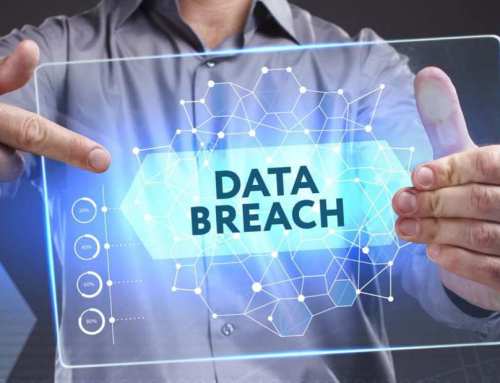FBT-free Electric Cars
New legislation before Parliament, if enacted, will make zero or low emission vehicles FBT-free. We explore who can access the concession and how.
Electric vehicles (EV) represent just under 2% of the new car market in Australia but it is a rapidly growing sector with a 62.3% jump in new EV registrations between 2020 and 2021.
Making EVs FBT-free is just the first step in the Government’s plan to make zero and low emission vehicles the car of choice for Australians, focussing on affordability and overcoming “range anxiety” by:
- Cutting import tariffs
- Placing EV fast chargers once every 150 kilometres on the nation’s highways
- Creating a national Hydrogen Highways refuelling network, to deliver stations on Australia’s busiest freight routes
- Converting the Commonwealth fleet to 75% no-emissions vehicles
It is on this last point, fleet cars, that the FBT exemption on EVs is targeted. In Australia, business account for around 40% of light vehicle sales according to a research report by Griffith and Monash Universities. However, EV sales to business fleets comprised a mere 0.08% of the market in 2020. The Government can control what it purchases and has committed to converting its fleet to no-emission vehicles, but for the private sector, there is a wide gap between the total cost of ownership of EVs and traditional combustion engine vehicles. It’s more expensive overall and the Government is looking to reduce that impediment through the FBT system.
How the EV FBT exemption will work
The proposed FBT exemption is intended to apply to cars provided by an employer to an employee under the following conditions:
| Low and zero emission cars
|
· Battery electric vehicles;
· Hydrogen fuel cell electric vehicles; and · Plug-in hybrid electric vehicles. Be careful here because this doesn’t include all hybrid vehicles. To qualify the car needs to be ‘plug-in’. A car that has an internal combustion engine will not meet requirements unless it is able to be fuelled by a battery that can be recharged by an off-vehicle power source.
|
| The car was first held and used on or after 1 July 2022 | Where the car is first held and used on or after 1 July 2022. Provided the conditions of the exemption are met, an electric car that was ordered prior to 1 July 2022, but was not delivered until after 1 July 2022 would be eligible for the exemption (even if an employer acquired legal title to the car before 1 July 2022). However, a car delivered to you prior to 1 July 2022 would not qualify.
A second-hand electric car may qualify for the exemption, provided that the car was first purchased new on or after 1 July 2022.
|
| Value below luxury car tax threshold for fuel efficient vehicles | The value of the car at the first retail sale must be below the luxury car tax threshold ($84,916 in 2022-23) for fuel efficient vehicles. The luxury car tax threshold generally includes GST and customs duty but excludes other items such as service plans, extended warranties, stamp duty and registration.
|
If an electric car qualifies for the FBT exemption, then associated benefits relating to running the car for the period the car fringe benefit is provided, can also be exempt from FBT.
Government modelling states that if an EV valued at about $50,000 is provided by an employer through this arrangement, the FBT exemption would save the employer up to $9,000 a year.
While the measure provides an exemption from FBT, the value of that fringe benefit is still taken into account in determining the reportable fringe benefits amount of the employee. That is, the value of the benefit is reported on the employee’s income statement. While income tax is not paid on this amount, it is used to determine the employee’s adjusted taxable income for a range of areas such as the Medicare levy surcharge, private health insurance rebate, employee share scheme reduction, and social security payments.
Can I salary sacrifice an electric car?
Assuming your employer agrees, and the car meets the criteria, salary packaging is an option. While some FBT concessions are not available if the benefit is provided under a salary sacrifice arrangement, the exemption for electric cars will be available. In order for a salary sacrifice arrangement to be effective for tax purposes, it needs to be agreed, documented, and in place prior to the employee earning the income that they are sacrificing.
Government modelling suggests that for individuals using a salary sacrifice arrangement to pay for a $50,000 electric vehicle, the saving would be up to $4,700 a year.
Who cannot access the FBT exemption
Your business structure makes a difference
By its nature, the FBT exemption only applies where an employer provides a car to an employee. Partners of a partnership and sole traders will not be able to access the benefits of the exemption as they are not employees of the business. When it comes to beneficiaries of a trust and shareholders of a company it will be important to determine whether the benefit will be provided to them in their capacity as an employee or director of the entity.
Exemption is limited to cars
As the FBT exemption only relates to cars, other vehicles like vans are excluded. Cars are defined as motor vehicles (including four-wheel drives) designed to carry a load less than one tonne and fewer than nine passengers.
EV State and Territory tax concessions
The Federal Government is not alone in using concessions to encourage electric vehicle ownership.
ACT
The ACT Government offers a stamp duty exemption on new zero emission vehicles, and up to two years free registration for new or second hand zero emission vehicles (registered between 24 May 2021 and before 30 June 2024).
New South Wales
Reimbursement of stamp duty paid on purchases of new or used full battery electric vehicles (BEVs) and hydrogen fuel cell electric vehicles (FCEVs), with a dutiable value up to and including $78,000.
Northern Territory
For plug-in electric vehicles (battery and hybrid plug-in), from 1 July 2022 until 30 June 2027, access free registration for new and existing vehicles and a stamp duty concession of up to $1,500 on the first $50,000 of the car’s market/sale value – 3% thereafter.
Queensland
Discounted registration duty for hybrid and electric vehicles. And, a limited $3,000 rebate for new eligible zero emission vehicles with a purchase price (dutiable value) of up to $58,000 (including GST) on or after 16 March 2022.
South Australia
A limited $3,000 subsidy and a 3-year registration exemption on eligible new battery electric and hydrogen fuel cell vehicles first registered from 28 October 2021.
Tasmania
From 1 July 2022 until 30 June 2022, no stamp duty applies to light electric or hydrogen fuel-cell motor vehicle (including motorcycles). Vehicles with an internal combustion engine do not qualify.
Victoria
A limited $3,000 subsidy is available for new eligible zero emission vehicles purchased on or after 2 May 2021. More than 20,000 subsidies are available under the program. Plus, stamp duty for ‘green passenger cars’ is set at the one rate regardless of value ($8.40 per $200 or part thereof).
Zero emission vehicles receive a $100 annual registration concession but are also subject to a per kilometre road user charge.
Western Australia
A $3,500 rebate on the purchase of a new zero emission, hydrogen fuel cell or battery light vehicle with a value of up to $70,000 purchased on or after 10 May 2022.









